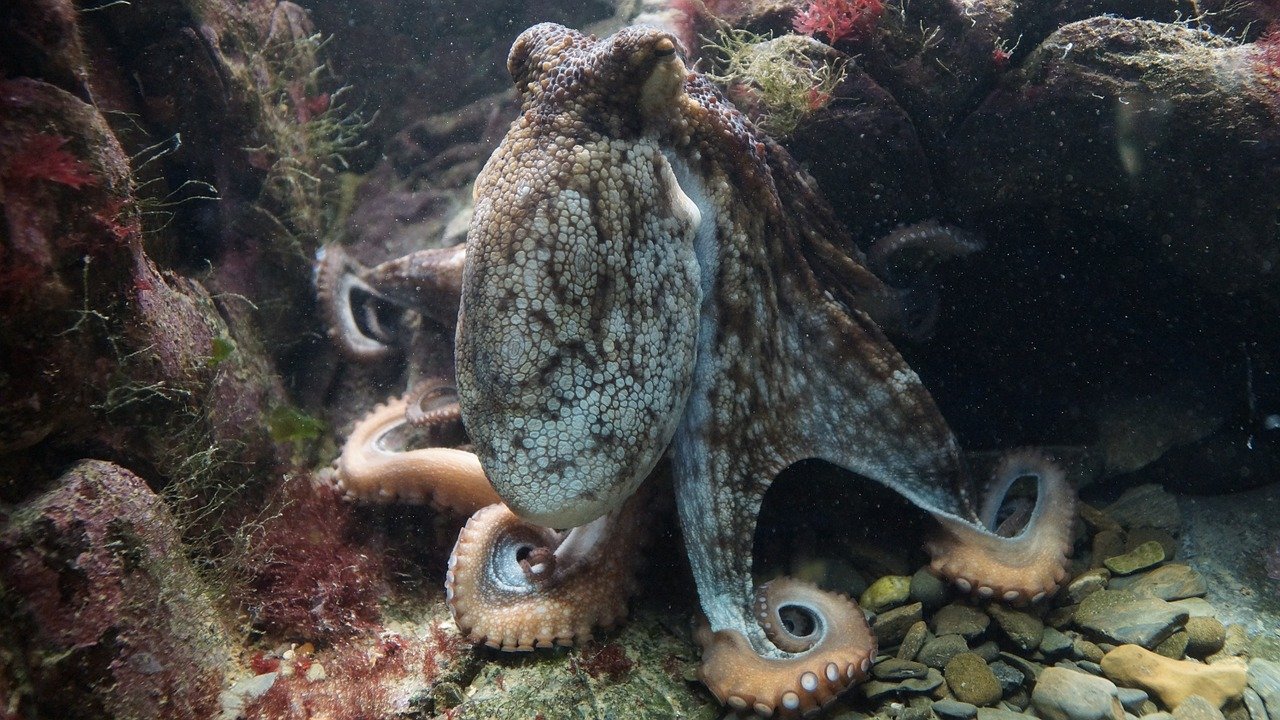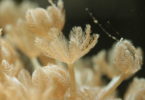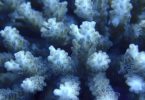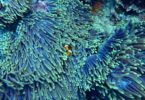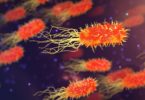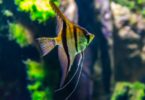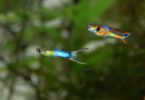Last Updated on November 19, 2022 by Matt
A mollusk, or mollusc, is the term used for any animal in the phylum Mollusca. The phylum Mollusca is the second largest phylum of invertebrate animals after the Arthropoda. It is an incredibly large and diverse phylum, with almost 100,000 described species, and possibly as many as 150,000.
Mollusks are soft bodied invertebrates, many of which have an internal or external calcium carbonate shell. All mollusks have a mantle which lines the shell, or if in the lack of a shell encases the body. Another feature that is found in all mollusks is a muscular foot which is used for locomotion except in a few cases. In some groups the foot is greatly reduced, as in the Bivalves, or modified as in the cephalopods.
There are many terrestrial species of mollusk, but the Mollusca is the largest marine phylum, comprising up to 23% of all animals in the oceans.
There are seven extant (still-living) classes in the Mollusca phylum, four of which are of interest to aquarists as members can be kept in the aquarium. These are the Aplacophora, Polyplacophora, Monoplacophora, Bivalvia, Scaphopoda, Gastropoda, and Cephalopoda. Of these seven the Polyplacophora, Bivalvia, Gastropoda, and Cephalopoda contain species which can be kept successfully in the aquarium.
These classes contain an immense amount of forms. In this article we will run through each of the classes that are of interest in the aquarium, and give examples of species and a brief overview of the Class as a whole.
IN THIS ARTICLE
Polyplacophorans/Chitons
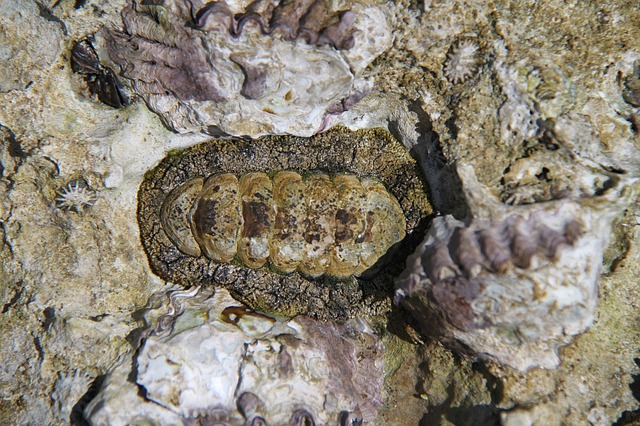
Chitons are the common name for the Polyplacophorans, the animals in the class Polyplacophora. Chitons are flattened dorso-ventrally and have a shell consisting of eight overlapping plates. They possess a muscular foot which is used in locomotion. Due to the overlapping plates chitons are able to flex upwards and are able to move over uneven surfaces and still be protected. The plates even allow for them to roll into a tight ball when removed from a surface. Shell plates are encircled by a skirt called a girdle.
Chitons are exclusively marine and are primarily herbivorous, grazing on algae which they scrape from rocks with their well-developed radula. Some species are omnivorous and some are carnivorous. Primarily grazing on algae and diatoms, they can also prey on bryozoans and barnacles, and also on detritus. A few species are actively predatory, catching small shrimp and fish.
Chitons are reasonably rare in the aquarium industry, although they can be useful in reef tanks to remove algae from rocks and the glass sides. Species such as the fuzzy chiton Acanthopleura granulata make good reef tank inhabitants. They are often very brightly colored, and can be a great addition to many tank setups.
Chitons are very easy to care for, and can often accidentally make their way into a tank be piggybacking on coral or live rock. While they are great algae eaters, their strong radula can scratch acrylic tanks.
Bivalves
The class Bivalvia contains many species which are of interest to aquarists. Bivalves have laterally compressed bodies that are enclosed in a calcium carbonate shell composed of two usually similar halves, typically showing bilateral symmetry. They have no head, and have lost the radula, being filter feeders instead. The gills have evolved into ctenidia specialized for feeding and respiration. While the majority of bivalves bury themselves in the substrate for protection, others anchor themselves to hard surfaces like rock. Scallops and file shells can swim!
The main human interest in bivalves in the seafood and pearling industry, where mussels, clams, and oysters are eaten frequently, and oysters create beautiful pearls. In the aquarium, there are many species of bivalves, both freshwater and marine, that can add greatly to many different setups. The vast majority of the species which are available to aquarists attach themselves to rock using their byssal muscle and byssal threads. Boring behavior is also common, enabling the bivalve to protect vulnerable areas.
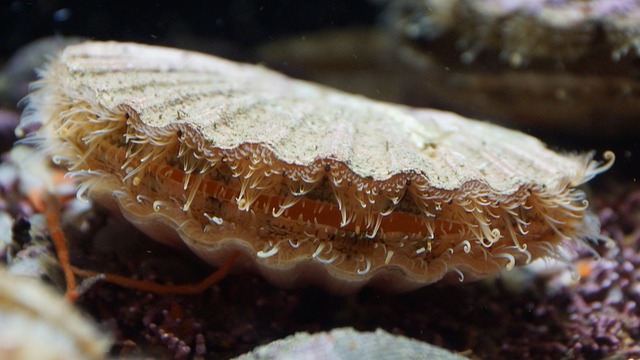
Bivalves are predominantly filter feeders, drawing water in through the inhalant siphon where it is passed across the modified gills for plankton to be filtered out, and then ejected via the exhalant siphon. The ctenidia then pass the captured plankton through a mucus stream to the mouth.
However it is exactly this feeding method that makes bivalves difficult to keep healthy in an aquarium environment. They need a good supply of phytoplankton, which can affect the water quality. A prevalent myth is that bivalves survive well in dirty water, and can actually clean and filter dirty water, whereas in actuality they need clean and healthy water quality to thrive.
A common bivalve species in aquaria are the flame scallops, Lima hians and L. scabra, which are often found in pet stores and online. They are sought after for their bright red coloration and interesting behavior and mantle shape. However they are difficult to keep and often don’t fare well.
Bivalves that have had great success in aquariums and are much easier to keep are the giant clams of the family Tridacnidae. Members of this family exhibit some stunning mantle coloration and patterning. They often bore into the live rock, so that the top of their shell is in line with the rock and only the mantle and opening is seen. The striking patterns and coloration can add huge value to reef tanks.
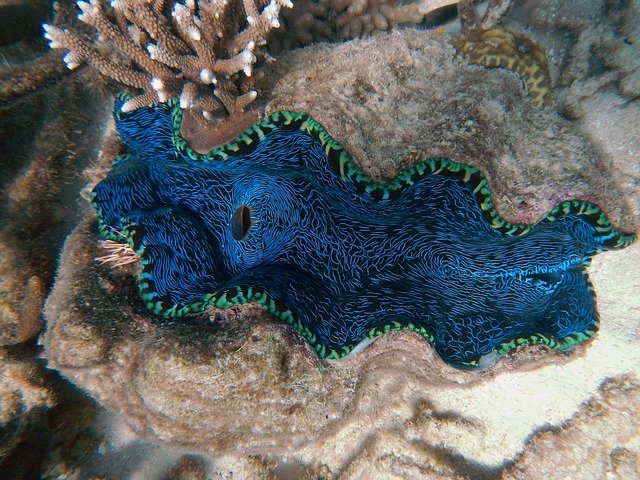
The reason that this family has had much more success in aquariums than other bivalves is because they have a symbiotic relationship with photosynthetic dinoflagellates called zooxanthellae. You might recognize this as the same organisms that corals have a relationship with! The zooxanthellae provide the clam with extra nutrition from the byproducts of photosynthesis, enabling it to survive much better in aquaria. While zooxanthellae use dangerous compounds such as ammonia, nitrate, and phosphate in their metabolism, they should still remain as close to 0 ppm as possible.
Especially in freshwater aquariums, great care needs to be taken to avoid contamination from unwanted bivalves when introducing plants and other external elements. Plants can be bleach dipped, which kills any hitchhiking organisms. There has been recent uproar over marimo moss balls from local stores being contaminated with invasive zebra mussels. Zebra mussels are incredibly invasive and hard to get rid of, and if they get into the tank a full water change and tank cleaning must be undertaken, as if larvae or mussels get down the drain they can do vast amounts of damage to the local ecosystem.
Gastropods
The gastropods are a group of mollusks which are defined by a developmental process called torsion, in which the body, the mantle and visceral mass, rotates 180° so that the anus lies above the head. All gastropods undergo torsion, although some groups undergo detorsion to reverse the process.
Gastropoda is a very large and diverse class, second only to the insects in number. They inhabit an extraordinary amount of ecosystems, from freshwater and marine, to the dark depths of the ocean to intertidal flats and estuaries, and from rainforests to temperature climates.
The diet of gastropods varies considerably between different groups in the class. Some are herbivorous, scraping off bits of plants or algae with their radula. Others are detritivores, feeding on dead and decaying matter and animals. Others still are actively predatory, and some have developed into parasites.
Animals within the Gastropoda class include abalone, limpets, conch, nudibranchs, sea hares, sea butterflies, snails, and slugs. There are many species which have value to aquarists and are highly prized in the trade. Both freshwater and marine setups can have a lot to gain from including gastropods; as algal feeders they can really help to keep pesky unwanted algal growth to a minimum.
Snails are perhaps the most successful and easy gastropods to keep in an aquarium. There are some beautiful marine species such as the cowries which are often found available and while they are algal grazers, most are omnivorous and some are predatory. Corals, sponges and other sessile invertebrates are often on the menu, so care is needed to ensure they don’t eat these animals.
Sea slugs such as nudibranchs are another group which have amazing and stunning colorations, and so are sometimes brought into the aquarium trade. However they require very specific diets, and if not met they will starve. They are notoriously difficult to keep, and also only live for around a year naturally.
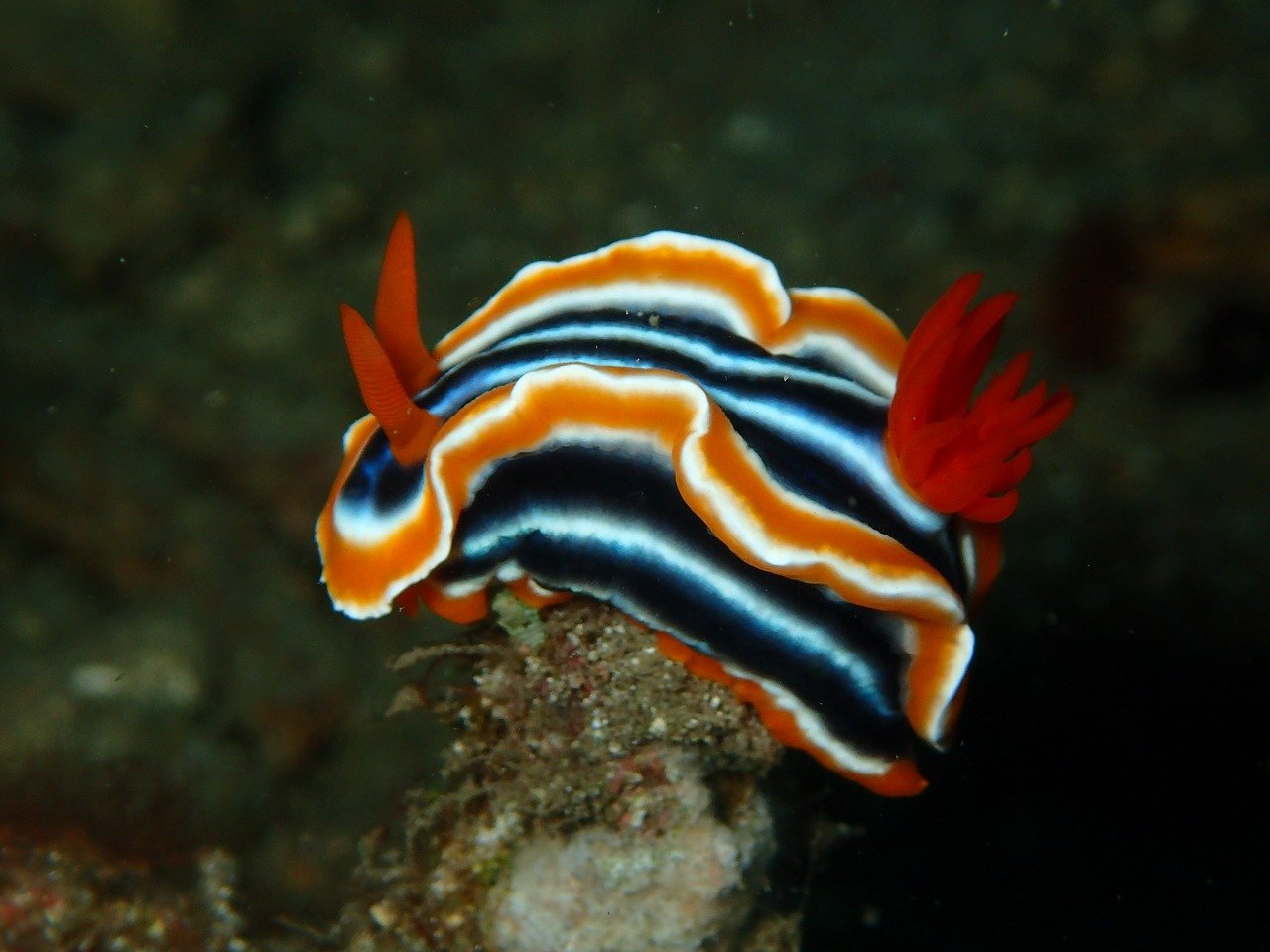
Nerite snails are very popular freshwater snails, possessing a shell that often has beautiful patterning. While these snails are freshwater, they breed in saltwater so there is no threat of sudden overpopulation. They can also be acclimated to a full saltwater tank.
Other popular freshwater snails include the mystery snails (Pomacea spp.), ramshorn snails, and rabbit snails (Tylomelania spp.). These snails are great algae eaters and also add their own aesthetic into the tank. A different snail to look at are the assassin snails such as Clea helena, which is a carnivorous snail predating on other snail species. Some snails such as the malaysian trumpet snail multiply very quickly, and assassin snails can be a unique way of keeping the population in check.
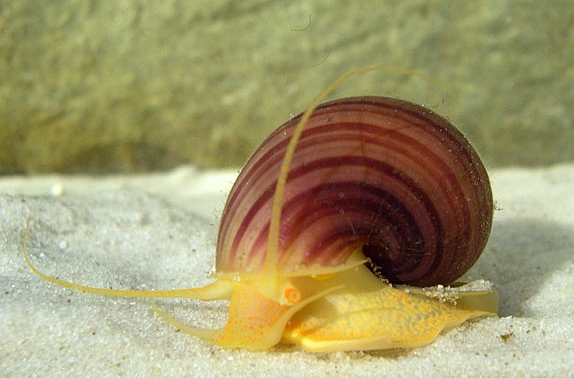
Mystery Snail. Credit: Stijn Ghesquiere, CC BY-SA 3.0, WikiCommons
On to marine gastropods which do very well in aquariums. Snails in the Trochus and Turbo genera are very easy to keep, and don’t require any special attention unlike other marine gastropods. Voracious algae eaters, they can be very useful in keeping a tank clean and tidy. It’s not only for their algae eating ability that they are so popular; both Trochus and Turbo snails have shells with fantastic looking shells.
Cephalopods
Cephalopods are perhaps the most unusual of the mollusks. This is because they go against the train of thought that invertebrates are simple, unintelligent animals which have only basic neurological functions. Cephalopods have highly developed senses, and their nervous system is the most complex of all invertebrates. They are widely regarded as extremely intelligent animals. There is an example of an octopus breaking out of its aquarium, crawling across the room to break into a tank containing crabs and eating its fill, before crawling back across the room into its own tank!
Two groups in the class Cephalopoda are extinct, and only a few species of modern Nautiloids are still extant in the subclass Nautiloidea. All other modern cephalopods still around today are in the subclass Coleoidea, which includes the octopus, squid, and cuttlefish. All species of cephalopod are exclusively marine.
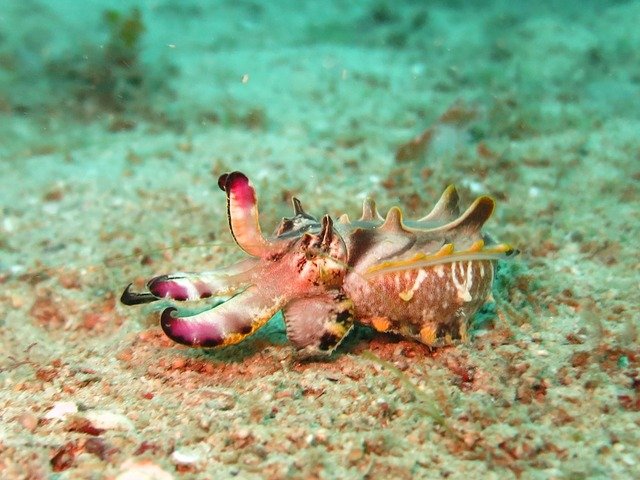
A cuttlefish – One of the most unusual of the mollusks
Being so intelligent cephalopods can make great additions to saltwater tanks. However they often only live for two years, so unless they are brought to the tank at a young age they won’t last long.
The extant species in the subclass Nautiloidea are the only modern cephalopods to have an external shell; in the Coleoidea the shell is either internal like in the cuttlefish or has completely disappeared like in the octopuses.
Cephalopods are masters of disguise and camouflage; they have specialized cells called chromatophores which alter their coloration. The cephalopod is able to control the size and pigment combinations of the pigment sacs found within these cells, enabling rapid color changes. Cephalopods are also able to change the texture of their skin, though it is best seen in cuttlefish and octopuses. Cephalopods use color and texture changes for camouflage, to attract a mate, to confound predators, and even to mesmerize prey to make them easier to catch.
Unfortunately keeping cephalopods in the home aquarium is incredibly difficult. Only octopus and cuttlefish are able to be technically kept in a home aquarium, as squid need a very large blackout tank and nautilus need special care. However some octopus and cuttlefish are large and not able to be kept in anything but a very large tank, and some octopuses are very venomous.
Trying to keep cuttlefish or octopuses isn’t for the faint hearted; they are very difficult to keep. As they eat anything they can grab with their tentacles and arms they can’t be kept in a reef or fish tank, they need to be kept by themselves. They also need live food as frozen or fresh food just won’t cut it. Being very intelligent, they also need constant enrichment. A tank filled with plenty of rocks and other items is essential, but as they are normally solitary animals no other animals!
It is a good idea to glue down rocks and have plenty of PVC pipes of different sizes in a tank containing an octopus. This is because as octopus like to play with things you don’t want a landslide!
Conclusion
Mollusks are amazing animals; they are the second largest phylum of animals, and the diversity they show is incredible.
As such, it is almost a guarantee that there is a mollusk species that will be able to benefit any aquarium setup. Some mollusks make an amazing focal point for a specialized aquarium, whereas others have huge value in community aquariums as a clean-up crew.
For instance there are both freshwater and marine mollusks that eat detritus, and many species which munch through an enormous amount of algae, reducing the level of unwanted and unsightly growth.
In fact, all aquariums probably are colonized by mollusks that you just can’t see and are beneficial or don’t threaten the health of the tank.
Hopefully this article has given you some good information about the mollusks, and given you an idea about what sort you might want for your tank setup.

